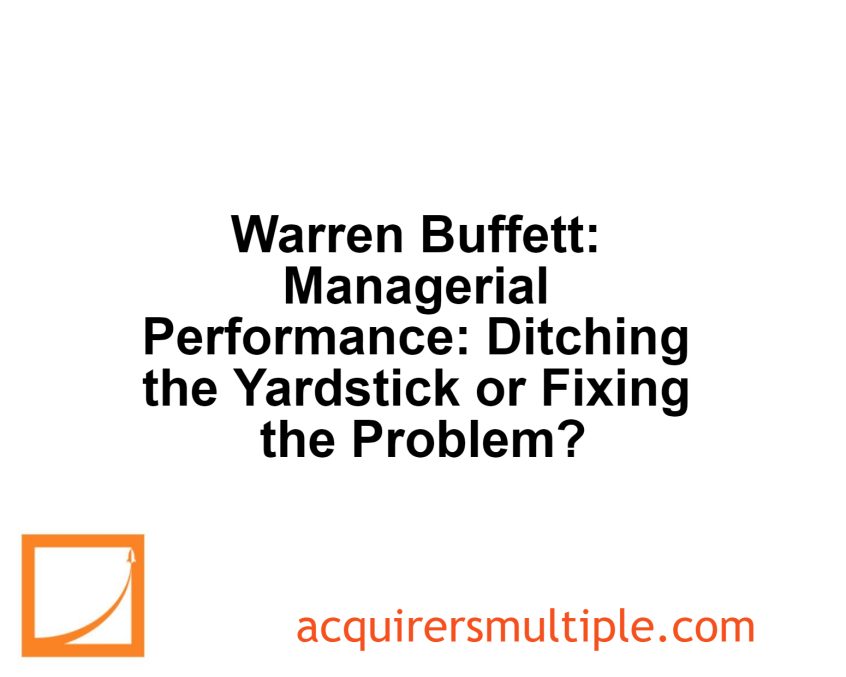In his 1983 Berkshire Hathaway Annual Letter, Warren Buffett explains why operating earnings/equity capital ratio is a good measure of managerial performance for most companies, but it may not be ideal in all situations. He finds it suspicious when a company abandons this metric during poor performance, suggesting they might be manipulating the measurement system instead of addressing their business problems. Here’s an excerpt from the letter:
Operating earnings of $31.5 million in 1982 amounted to only 9.8% of beginning equity capital (valuing securities at cost), down from 15.2% in 1981 and far below our recent high of 19.4% in 1978. This decline largely resulted from:
- a significant deterioration in insurance underwriting results;
- a considerable expansion of equity capital without a corresponding growth in the businesses we operate directly; and
- a continually-enlarging commitment of our resources to investment in partially-owned, nonoperated businesses; accounting rules dictate that a major part of our pro-rata share of earnings from such businesses must be excluded from Berkshire’s reported earnings.
It was only a few years ago that we told you that the operating earnings/equity capital percentage, with proper allowance for a few other variables, was the most important yardstick of single-year managerial performance.
While we still believe this to be the case with the vast majority of companies, we believe its utility in our own case has greatly diminished. You should be suspicious of such an assertion.
Yardsticks seldom are discarded while yielding favorable readings. But when results deteriorate, most managers favor disposition of the yardstick rather than disposition of the manager.
To managers faced with such deterioration, a more flexible measurement system often suggests itself: just shoot the arrow of business performance into a blank canvas and then carefully draw the bullseye around the implanted arrow.
We generally believe in pre-set, long-lived and small bullseyes.
However, because of the importance of item (3) above, further explained in the following section, we believe our abandonment of the operating earnings/equity capital bullseye to be warranted.
You can read the entire letter here:
Berkshire Hathaway 1983 Annual Letter
For all the latest news and podcasts, join our free newsletter here.
Don’t forget to check out our FREE Large Cap 1000 – Stock Screener, here at The Acquirer’s Multiple:




